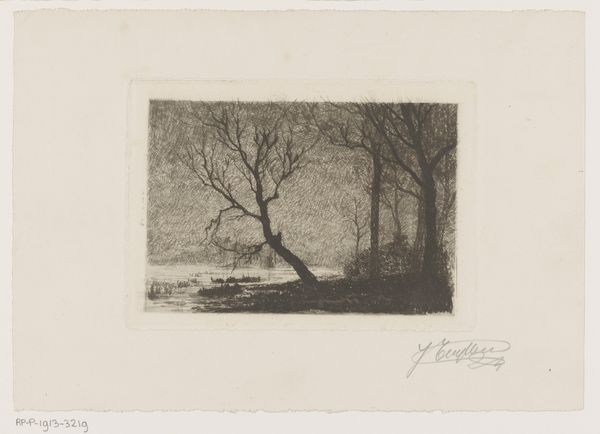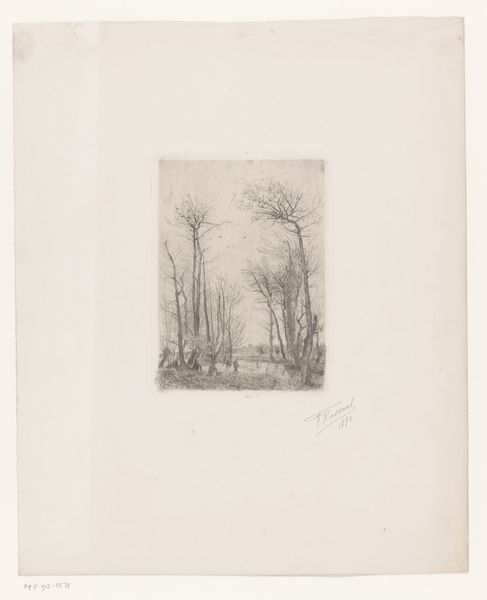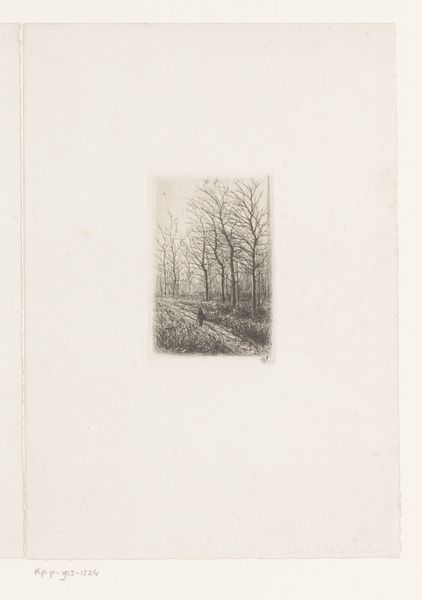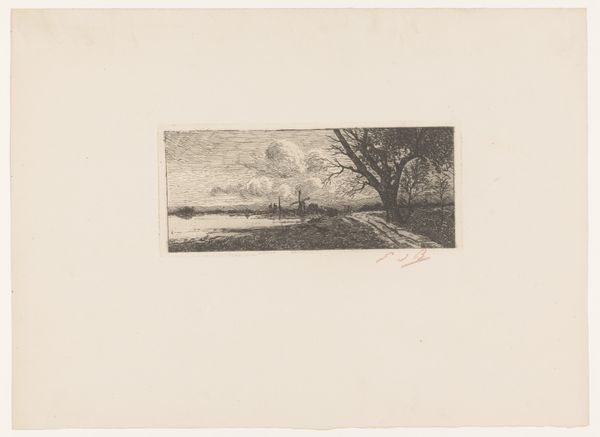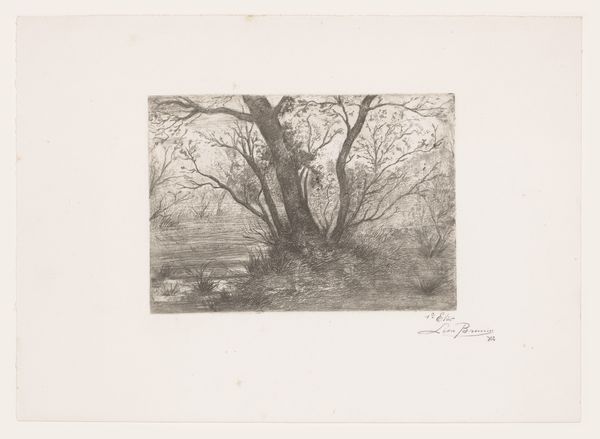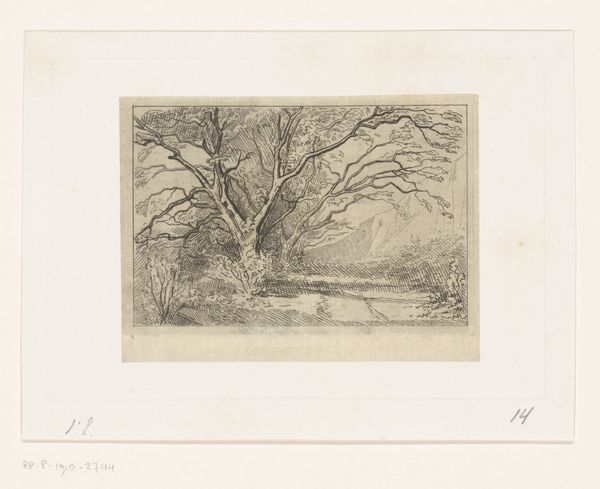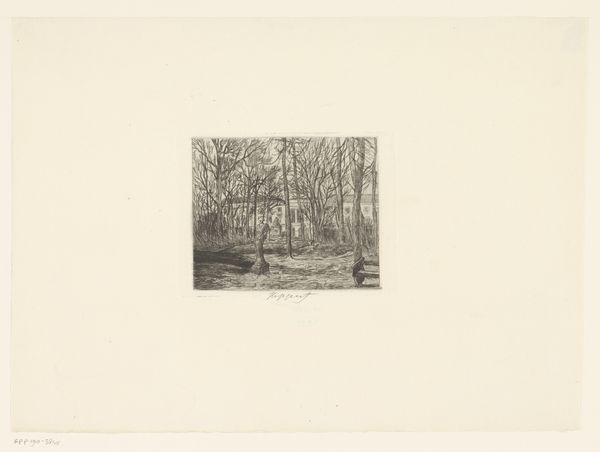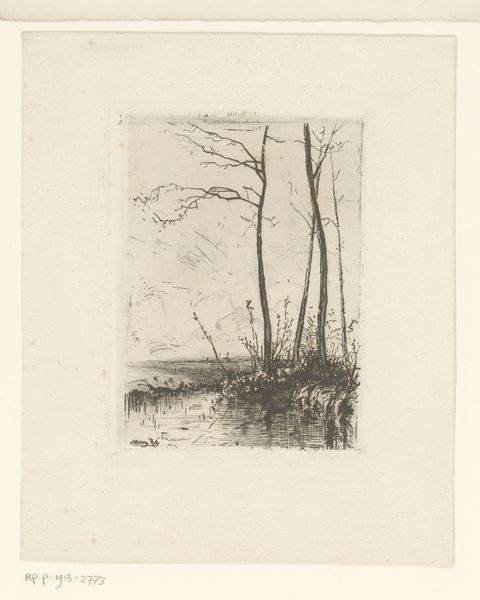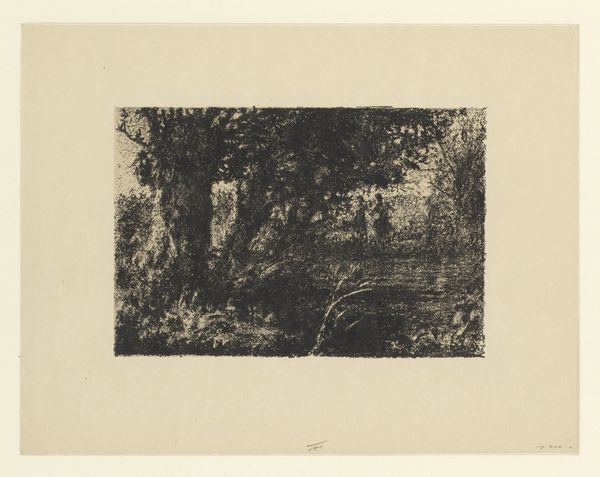
print, etching
# print
#
etching
#
landscape
#
river
#
etching
#
realism
Dimensions: height 119 mm, width 167 mm
Copyright: Rijks Museum: Open Domain
Editor: This etching, “Landschap met kasteel aan een rivier,” or "Landscape with Castle on a River," is attributed to Jérôme Tuyttens and dates from somewhere between 1850 and 1883. It's a rather somber scene; the landscape feels both familiar and distant. What's your take on how this piece reflects its time? Curator: That somber mood, as you put it, speaks volumes about the artistic and social landscape of the latter half of the 19th century. The rise of Realism as a movement was, in many ways, a reaction against the idealized and often romanticized landscapes that preceded it. Here, the focus seems to be less on grand narrative and more on the quiet, everyday experience of the river and its surroundings. Considering the growth of industrialization and urbanization at that time, do you see this as a reflection of a yearning for a simpler, more natural past, or something else entirely? Editor: I see that. Perhaps the focus on a mundane landscape made art more relatable to middle class audiences? It wasn't just for the elites anymore. Curator: Precisely! The etching medium itself contributes to that accessibility. It was a more democratic medium, allowing for wider distribution and consumption of art. Think about how this piece might have circulated: perhaps in a portfolio, a periodical, or even framed on the wall of a middle-class home. This availability democratized not only art consumption, but also allowed the artist to reach an audience outside the established salon system, subtly altering the power dynamics in the art world. What are your thoughts on that? Editor: That's a very different perspective than pure aesthetics! I hadn't considered how the print medium allowed for that shift in accessibility. I’ll remember to consider how a work was circulated. Thanks! Curator: My pleasure. It's important to view artworks as more than just images. They are artifacts deeply embedded within specific social and political contexts. That added complexity is fascinating, don't you agree?
Comments
No comments
Be the first to comment and join the conversation on the ultimate creative platform.
